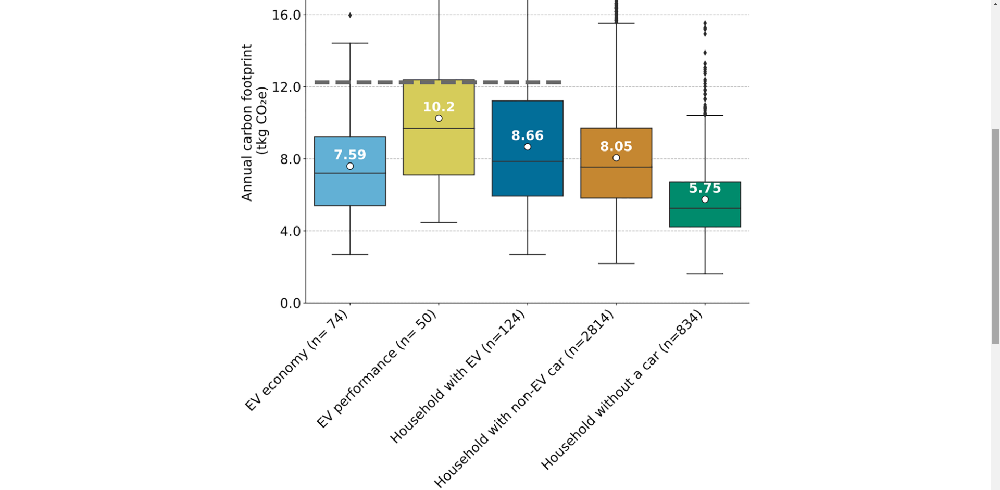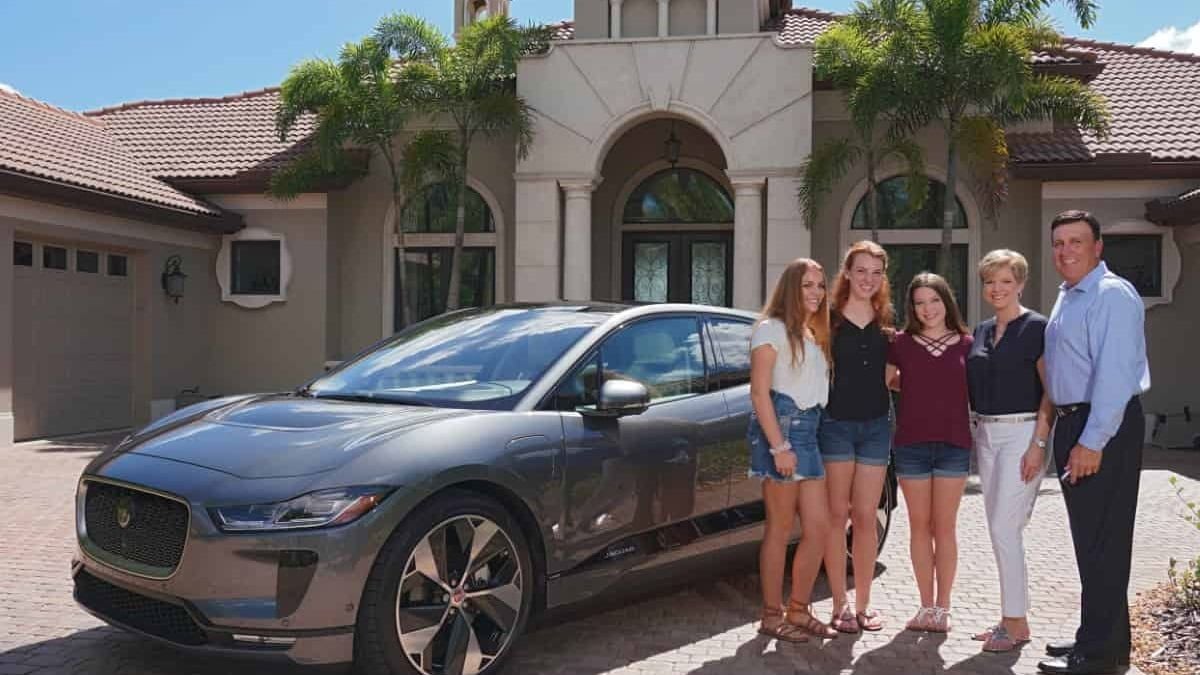No, this story isn’t another one pointing out that if you power EVs with dirty fuel the carbon equation is unkind to EVs. This one is a bit different. A group of researchers in Finland (sort of like Norway, but on the other side of Sweden) did a study to figure out what is holding folks back from owning an EV so that social engineering programs can be developed to surmount those barriers. What they discovered accidentally is that the folks who own EVs now have a bigger carbon footprint than their fellow citizens who drive internal combustion engine vehicles (ICEVs). Oopsie.
The Big Paradox
The big reveal comes early in the report. It’s in the introductory abstract, and the author’s write, “EV owners in Finland have more financial security, own more cars, drive more, and have a larger average household carbon footprint than the general population.” The fact that EV owners have a larger carbon footprint is later repeated, dissected, and opined on by the authors.
Why Do EV Drivers Have a Larger Carbon Footprint?
The reason the researchers say that electric vehicle drivers have a larger footprint isn’t because the EVs generate more carbon than ICEVs. That’s only true when the power charging them is carbon-intensive (coal). The reason they cite is that the people who own EVs are wealthier and lead an overall more carbon-rich lifestyle. So to be clear, if you place a comment under this story defending EVs, and saying “EVs are of course cleaner than ICEVs,” nobody is arguing with you. You are missing the whole point.
What Was the Point of the Study Again?
So, rather than translate the study’s intentions, here is exactly what the researchers say:
“Promoting a shift from internal combustion engine vehicles to EVs should be supported by policy makers aiming to curtail emissions from car use. To design policies and interventions to promote EV adoption, information is needed on how people perceive electric vehicles and what are the real and perceived barriers preventing their adoption. With this objective in mind, it was investigated what the current EV owners in Finland are like and how they compare with the general population. We also endeavored to identify real as well as potentially misperceived barriers to EV adoption and factors affecting EV purchasing intentions.”
We are not siding with these folks in their opinions or goals. Just laying out what they say.
What Did the Researchers Stumble Upon that is a Paradox
The part of the study that is fun, is this:
“Participants from EV households had an average carbon footprint of 8.66 tkg CO2e (SD = 3.62), participants from households with cars that were not EVs had a slightly lower average of 8.05 tkg CO2e (SD = 3.01) and participants from households without a car had significantly lower average carbon footprint of 5.75 tkg CO2e.”
Translating what the study says, this means that EV owners have a lifestyle that generates slightly more carbon than owners of traditionally-powered vehicles. Not less. When you view the whole study, you can find this at section 3.4 in the fourth paragraph. The study authors could not help but try to make light of this important finding. To soften the fact that EV owners generate more carbon, they added, “Post hoc analyses demonstrated that the difference between participants from EV and ICEV households was not statistically significant.” What the study authors do admit is that owners of performance EVs have a much higher carbon footprint than owners with more mainstream EV models. The chart helps illustrate this.
 Other Study Findings
Other Study Findings
Here are some findings we pulled directly from the story:
- “Current EV users, who can still be regarded as early adopters of the technology, are often middle-aged men who are interested in technology, not concerned about ease of use, often own multiple cars, are financially affluent and value the symbolic attributes of car ownership and social status that an EV provides.”
- “...current EV households are generally in a financially secure position with a stable high income while the situation among other car owners and carless households is more varied. EV owners are also willing to pay more for their next car than other participants.”
- “While the reduction in the cost of EVs has made them a viable option to more households, their higher cost compared to used ICEVs is still a real barrier to adoption for many people.”
- “The majority (70.9%) of current EV households own more than one car while only 37.4% of non-EV households have additional cars”
- “These results indicate that current EV owners are heavy users of their cars, and their driving habits are not similar to non-EV owners.”
- “...there is also an risk that the low running cost and enjoyable driving experience of EVs would entice some users to drive more after switching to EV, even if the driving is non-essential or it would have previously been accomplished with active forms of traffic or public transport. Such behavior would carry with it a negative environmental impact.”
What Would an American-Market Study of Carbon Footprint Reveal?
America is not Finland, so does this study have any real applicability to the American lifestyle and American EV adoption? One Harvard researcher found it did. Among her findings were “If you’re somebody who drives a fair amount then you are likely well-suited to drive an electric vehicle,” the author said. “If, on the other hand, you’re someone who seldom drives, and the vehicle is mostly going to sit in the garage, then you may counterintuitively be better off owning a gasoline-powered vehicle.” The researcher also concluded, “Not only do U.S. subsidies flow to the well-off, with new EVs still averaging nearly $12,000 more per vehicle in 2022 than those powered by fossil fuels, but it turns out tax credits (up to $7,500 in 2023) can incentivize the wrong buyers. Many are led to increase their carbon footprint.” Oopsie.
In a story published by PBS, transportation was found to be second, not first, as the highest portion of an American’s carbon footprint (on average). If you wish to read some content that links housing carbon production directly to transportation carbon production, these two stories may interest you. Thanks for reading.
- Why a hybrid house helps the environment much more than a hybrid car
- How Many Miles Of Driving Are Offset by Adding a Heat Pump & The Plusses and Minuses
If you'd like to add a comment under this story, please note that our comments section has returned and is in bold red at the bottom of the page.
We have linked to the study in the body of the story, but in case you missed it, here it is again. Please allow us to also off this citation: Sandman N, Sahari E, Koponen A (2024) But can it drive to Lapland? A comparison of electric vehicle owners with the general population for identification of attitudes, concerns and barriers related to electric vehicle adoption in Finland. PLOS Clim 3(10): e0000346.
John Goreham is a credentialed New England Motor Press Association member and expert vehicle tester. John completed an engineering program with a focus on electric vehicles, followed by two decades of work in high-tech, biopharma, and the automotive supply chain before becoming a news contributor. He is a member of the Society of Automotive Engineers. In addition to his eleven years of work at Torque News, John has published thousands of articles and reviews at American news outlets. He is known for offering unfiltered opinions on vehicle topics. You can connect with John on Linkedin and follow his work on our X channel. Please note that stories carrying John's by-line are never AI-generated, but he does employ Grammarly grammar and punctuation software when proofreading.
Image of family with battery electric vehicle courtesy of Jaguar US media. Chart courtesy of journals.pols.org and the study authors.





